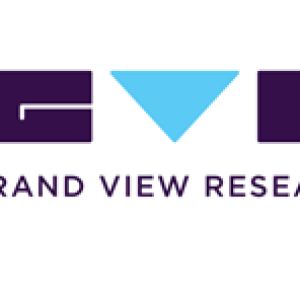A Look into Animal Feed Organic Trace Minerals Industry……Deep Analysis…..Posted by Mrudula Anil Karmarkar on March 15th, 2021 The global animal feed organic trace minerals market size is expected to reach USD 880.2 million by 2025, according to a new report by Grand View Research, Inc. It is projected to register a CAGR of 8.4% during the forecast period. Increasing R&D investments by manufacturers like Alltech and Archer Daniels Midland Co. to reduce the manufacturing cost and to expand the product application is estimated to boost overall growth. We all are encouraged to have a healthy diet in our lives. Milk and other dairy items, along with meat and poultry products, are all said to help us in maintaining a fit lifestyle. What the most crucial aspect is here, is that the health of the animals, who are the source of these products, should be optimum, and this is where animal feed organic trace minerals come into the picture. We may not know a thing about them; however, this is a very important part in a farmer’s handbook. How, you might ask? A Boon For Animals! Animal feed organic trace minerals, when fed to cows, can lead to birth of healthy calves with string immune systems. Additionally, they can also help in production of optimal quality colostrum, while also helping cows in recovering from calving quicker. These minerals are of greater importance during stressful events or when the environment conditions are not suitable. These conditions include pre-calving, when a cow transfers nutrient to her developing calf; during bull development and pre-breeding for improving the quality and quantity of semen. The answer is, organic trace minerals are added to animal feed in order to improve its quality. They are made by connecting minerals to organic molecules such as polysaccharides and amino acids, and are also referred to as chelates. Animal feed organic trace minerals offer multiple benefits, in terms of immunity, reproduction, growth and digestion. They are found in both organic and inorganic sources, and include zinc, manganese, copper and cobalt. When added to animal feed, they provide enhanced gut absorption and improved bioavailability. So, which are the major products involved in the animal feed organic trace minerals market? The important ones include:
Minerals used in traces perform specific functions in different animals. For instance, zinc helps the formation of eggshell and eggshell membrane in poultry. Manganese helps in synthesis of fatty acids and cholesterol and formation of melanin in poultry, while copper helps hatchability and fertility of eggs. A large number of raw material suppliers are present in the animal feed organic trace minerals market. Korea Zinc Group, Nyrstar, Codelco, and BHP Billiton Ltd. supply raw materials, such as zinc, copper, iron, and manganese, to this industry. The market is driven by the growing demand for animal feed. Increasing per capita consumption of meat was one of the major factors propelling the growth of animal feed organic trace minerals. In 2016, the U.S. led the market in per capita meat consumption with 97.1 kg, and was followed by Australia with 94.8 kg. Argentina, Uruguay and Israel rounded off the top 5 per capita meat consumption countries. Besides, minimizing the after-effects of such outbreaks is a major challenge faced by manufacturers and governing bodies worldwide. Increasing R&D activities to maximize specific functions of organic trace minerals are creating new opportunities for industrial development. For instance, using zinc to strengthen eggshells in poultry and copper for improving the fertility of eggs. Have a Query? Ask Our Expert: https://www.grandviewresearch.com/inquiry/212/ibb A Necessity For Cattle All Across The Globe Asia Pacific witnessed the highest demand for organic trace minerals in animal feed in 2016 owing to high demand from the poultry and swine segments. This region was characterized by the availability of cheap labor and abundant raw materials. An increase in the demand for organic trace minerals from China, India, and Japan has played a key role in the growth of the animal feed organic trace minerals market in this region. North America was one of the largest consumers of compound feed in the dairy cattle segment in 2016. Certain factors such as production efficiency, cost control, and scale of operation determine the profitability of this industry. New technologies and systematic supply chain management have driven the dairy industry globally. Growing market for products such as butter, yogurt, ice cream, and cheese has provided a boost to this segment, which, in turn, has positively impacted the demand for animal feed organic trace minerals. Feed law in Europe allows for a wide range of trace mineral additives to be used in cattle nutrition, while also regulating the maximum inclusion level in the final feed. Even though the past few years have seen multiple reductions in the maximum feed inclusion levels of some trace minerals, there have been factors which have led to increased demand for animal feed organic trace minerals: teat canal keratinization, regeneration after calving, and physiological and environmental stress. The European market has seen the introduction of several categories of animal feed organic trace minerals of manganese, copper, zinc and iron since the 1990s. About Grand View Research Grand View Research, Inc. is a U.S. based market research and consulting company, registered in the State of California and headquartered in San Francisco. The company provides syndicated research reports, customized research reports, and consulting services. To help clients make informed business decisions, we offer market intelligence studies ensuring relevant and fact-based research across a range of industries, from technology to chemicals, materials and healthcare. For More Information:www.grandviewresearch.com Like it? Share it!More by this author |


